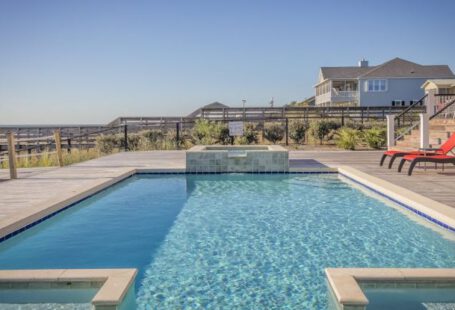Ponds are not only a beautiful addition to any landscape but also serve as vital ecosystems. To maintain the health and aesthetics of a pond, choosing the right plants is crucial. The right mix of aquatic plants can not only enhance the beauty of the pond but also contribute to its overall health by providing oxygen, filtration, and habitat for various organisms. Let’s explore some of the plants that are beneficial for pond health and aesthetics.
**Floating Plants**
Floating plants are excellent for ponds as they help in providing shade, reducing algae growth, and improving water quality. Water lilies, for example, are not only visually appealing but also provide cover for fish and other pond inhabitants. Duckweed, another floating plant, helps in nutrient absorption and oxygenation. These plants play a significant role in maintaining a balanced ecosystem within the pond.
**Marginal Plants**
Marginal plants are those that grow along the edges of the pond, partially submerged in water. They not only add a natural look to the pond but also help in stabilizing the shoreline. Plants like cattails and rushes are excellent choices for marginal areas. Their root systems help prevent erosion and provide habitat for beneficial insects and birds. Additionally, marginal plants can help in nutrient uptake, keeping the water clean and clear.
**Submerged Plants**
Submerged plants are entirely underwater and play a crucial role in oxygenating the water. They absorb nutrients, compete with algae for resources, and provide hiding spots for fish. Plants like hornwort and anacharis are popular choices for submerged vegetation in ponds. These plants are easy to maintain and contribute significantly to the overall health of the pond ecosystem.
**Bog Plants**
Bog plants thrive in moist soil and can be placed at the edges of the pond or in shallow water. They add diversity to the pond landscape and help in nutrient absorption. Plants like irises and marsh marigolds are excellent choices for bog areas. Their colorful flowers add visual interest, while their roots help in water filtration and purification.
**Oxygenating Plants**
Oxygenating plants are essential for maintaining a healthy pond environment. They release oxygen during the day and absorb carbon dioxide and other nutrients, which is crucial for fish and other aquatic life. Plants like waterweed and water milfoil are popular choices for oxygenating ponds. These plants not only improve water quality but also contribute to the overall aesthetics of the pond.
**Conclusion**
Choosing the right plants for your pond is essential for both its health and aesthetics. By incorporating a variety of aquatic plants such as floating plants, marginal plants, submerged plants, bog plants, and oxygenating plants, you can create a balanced ecosystem that is not only visually appealing but also self-sustaining. Remember to consider the specific needs of your pond, such as sunlight exposure and water depth, when selecting plants. With the right mix of plants, you can enjoy a beautiful and healthy pond for years to come.





